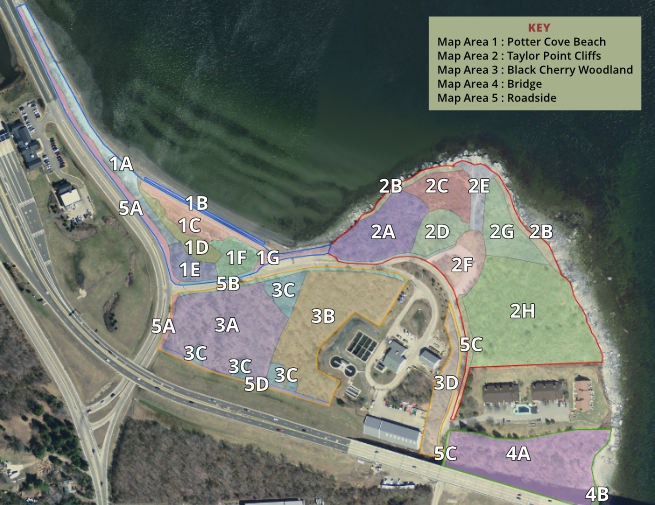Common Name: Wine Raspberry or Wineberry
Specific Name: Rubus phoenicolasius
Known Occurrence at Taylor Point:
Map areas: Woodlands 3A, Woodlands 3B, Woodlands 3C, Woodlands 3D
Category: Invasive, Non-Native, Shrub
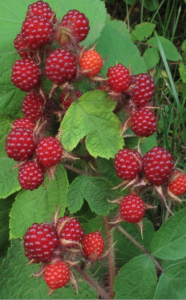
Ecological Considerations:
Wine Raspberry, or Wineberry is a member of the raspberry and blackberry family and grows as tall upright canes. The canes are covered with red hairs and spines, which give them a reddish color when viewed from afar. The canes may grow as high as 9 feet. Wineberry grows especially well in moist conditions and open sun. Many birds and mammals nest among its brambles.
Wineberry plants have small greenish flowers with white petals and reddish hairs in Spring, giving way to flavorful bright red raspberry-like fruit in June and July.
Problems Posed by this Plant:
Wineberry grows rapidly, often forming dense thickets across large areas, outcompeting the native plants which may be present. Wineberry can threaten native plants in forests, in fields, alongside streams and wetland edge habitats, as well as open woods.
Native Species Affected by this Plant:
Factors Affording a Competitive Advantage to this Plant:
Rubus phoenicolasius can rapidly form dense monotypic thickets that crowd out native vegetation.
Propagation Mechanisms and Related Issues Affecting Efforts to Remove and/or Eliminate this Plant from Taylor Point:
Wineberry reproduces through seed propagation as well as vegetatively, forming root buds and sprouting new plants from where canes touch the soil. The berries are dispersed by birds and mammals.
Documented Best Removal Practices and Options/Pros and Cons of Various Options:
In moist, loose soils, hand-pull or use a spade to remove plants. Dispose of cut canes and berries (if present) to prevent seeds from establishing new plants.
Root fragments may start a new plant, though Wineberry does not have a particularly rigorous underground structure.
While branches with berries should be bagged. The remaining plant material can be left to compost.
Case Studies of Removal Efforts, Lessons Learned and Recommendations:
Additional Photos:
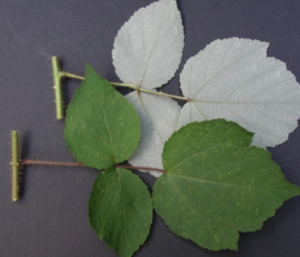
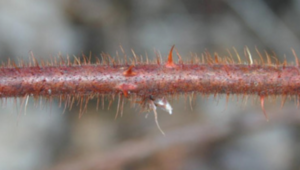
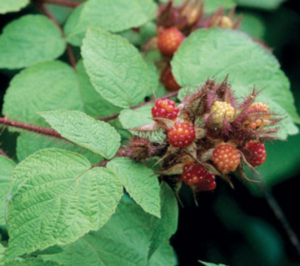
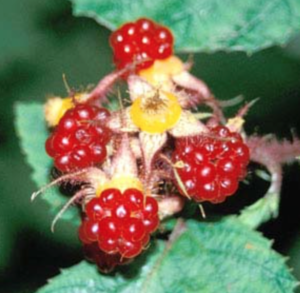
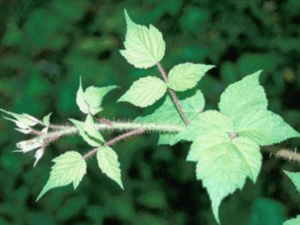
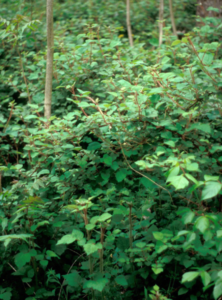
Sources cited:
URI College of Environment and Life Sciences
Invasive Plant Atlas of New England
National Park Service
New York Invasive Species information
Suzanne Enser, TPRA CRMC Permit Request Support paper
Key Words:
Shrub;
Wineberry
Rubus phoenicolasius
Seed – Berries / Drupes/ hips;
Vegetative – Root Sprouting;
Vegetative – Layering;
Black Cherry Woodland
3A?, 3B, 3C, 3D?
